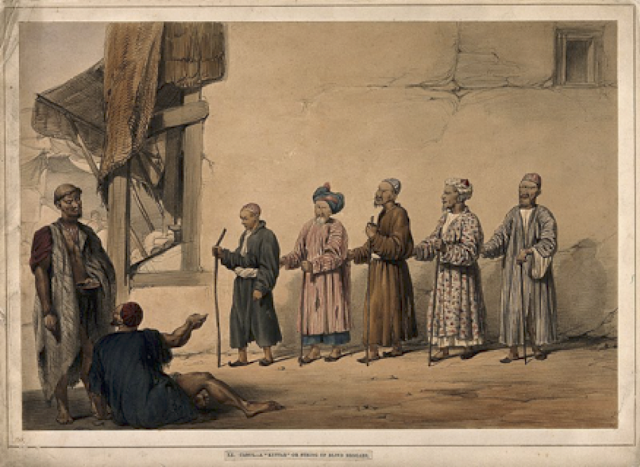By Daniel Blackie
@daniel_blackie
Imagine this: you’ve helped organise a wonderful workshop on disability history at a local community centre. Everything is going great. There’s a throng of people – mums, dads, children, grandparents – and they are really enthused and curious about the hidden history of disability.
The human interest element of the workshop – let’s say the colourful life story of a long forgotten one-legged former miner – has had the desired effect. Folks are intrigued, so intrigued, in fact, they’re asking for tips about where they can find out more about this person’s life. You tell them you got the story from a digitised historic newspaper you read online at the British Newspaper Archive site.
‘Oh, that’s brilliant – you mean we don’t have to travel hundreds of kilometres to the British Library to read it’?
‘No, but you do have to pay a subscription to use the service: twenty pounds to read forty pages’.
Mum then turns to her two young children and says: ‘How about it, kids? We were going to go to the new Lego Movie tomorrow, but I could use that money to get a subscription and we could read old newspapers instead’.
Suddenly the kids don’t look so enthusiastic anymore. And there, in that moment, you realise that the prospect of this family investigating disability history together has just died.
But it doesn’t have to be that way. Excellent free online resources that support public disability history do exist. Disability historians just have to make sure they use them in their public engagement work. For example, the National Library of Wales’ ‘Welsh Newspapers Online’ (WNO) is a brilliant platform, and one that could definitely help avoid a spine-chilling Lego Movie moment. It actually includes many of the same titles the subscription-charging British Newspaper Archive holds.
@daniel_blackie
Imagine this: you’ve helped organise a wonderful workshop on disability history at a local community centre. Everything is going great. There’s a throng of people – mums, dads, children, grandparents – and they are really enthused and curious about the hidden history of disability.
The human interest element of the workshop – let’s say the colourful life story of a long forgotten one-legged former miner – has had the desired effect. Folks are intrigued, so intrigued, in fact, they’re asking for tips about where they can find out more about this person’s life. You tell them you got the story from a digitised historic newspaper you read online at the British Newspaper Archive site.
‘Oh, that’s brilliant – you mean we don’t have to travel hundreds of kilometres to the British Library to read it’?
‘No, but you do have to pay a subscription to use the service: twenty pounds to read forty pages’.
Mum then turns to her two young children and says: ‘How about it, kids? We were going to go to the new Lego Movie tomorrow, but I could use that money to get a subscription and we could read old newspapers instead’.
Suddenly the kids don’t look so enthusiastic anymore. And there, in that moment, you realise that the prospect of this family investigating disability history together has just died.
But it doesn’t have to be that way. Excellent free online resources that support public disability history do exist. Disability historians just have to make sure they use them in their public engagement work. For example, the National Library of Wales’ ‘Welsh Newspapers Online’ (WNO) is a brilliant platform, and one that could definitely help avoid a spine-chilling Lego Movie moment. It actually includes many of the same titles the subscription-charging British Newspaper Archive holds.




